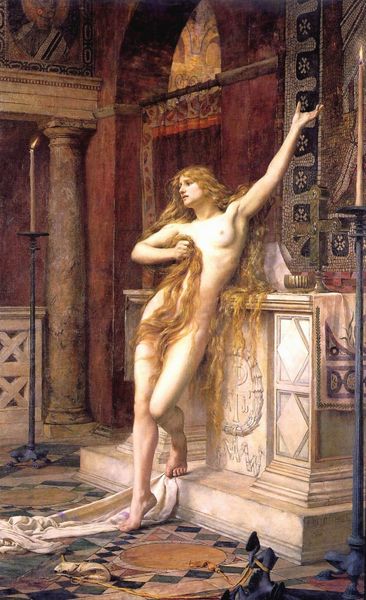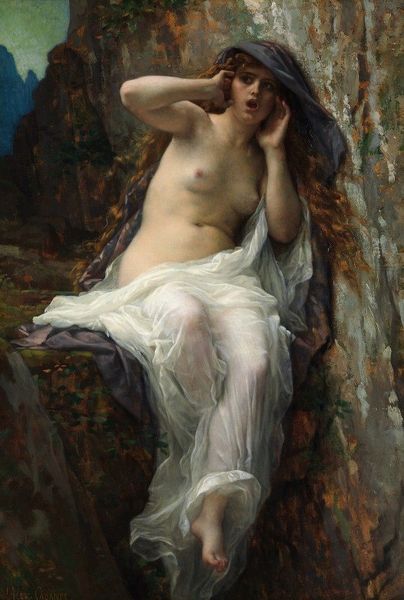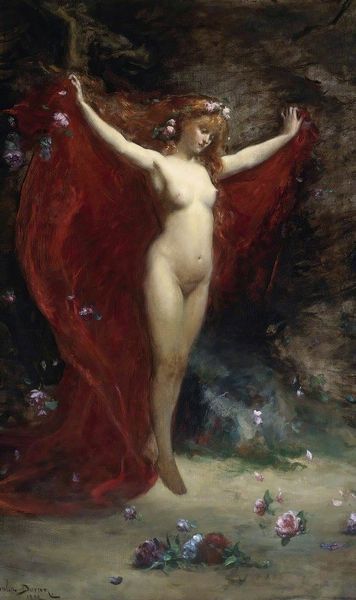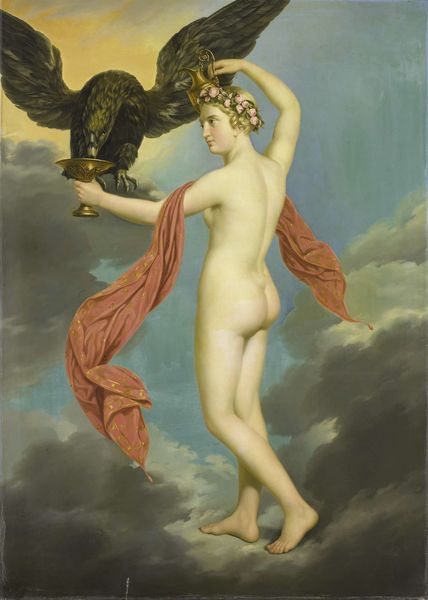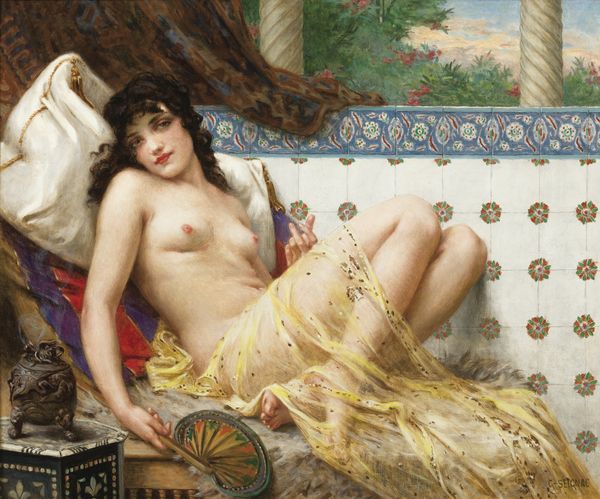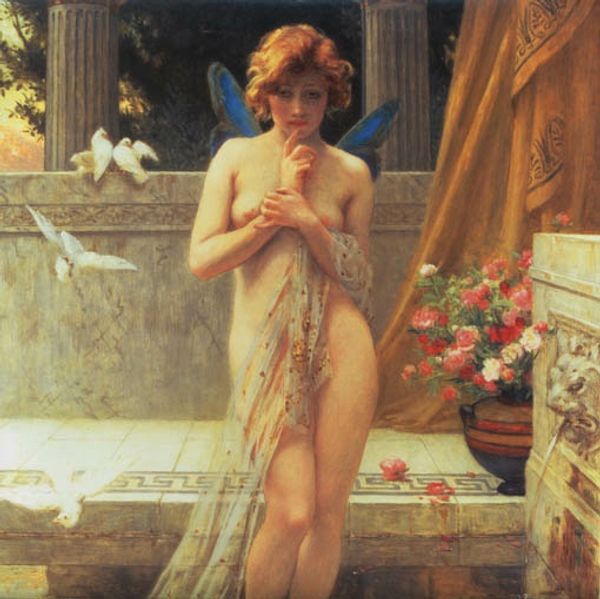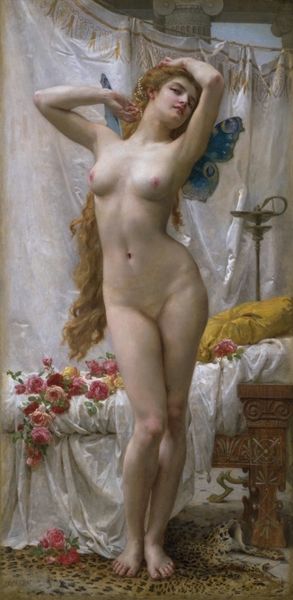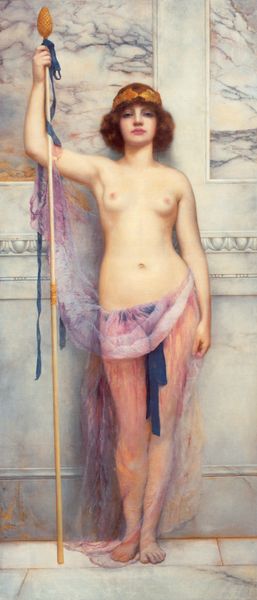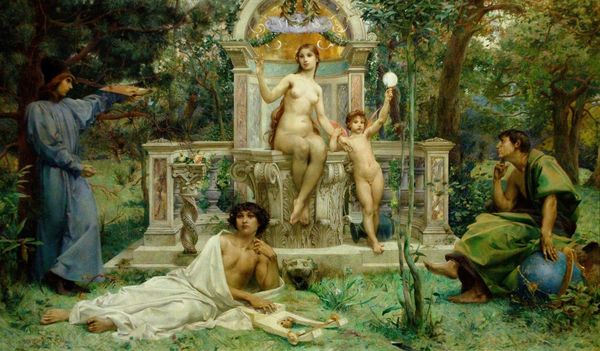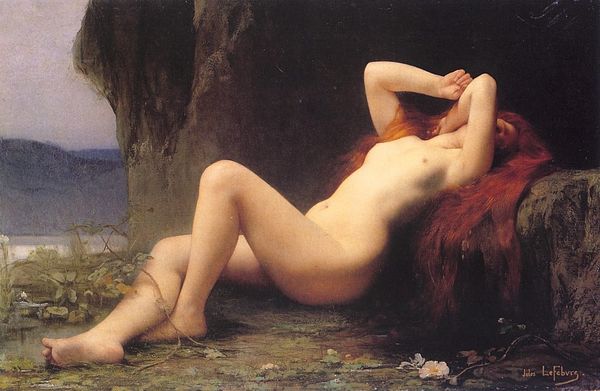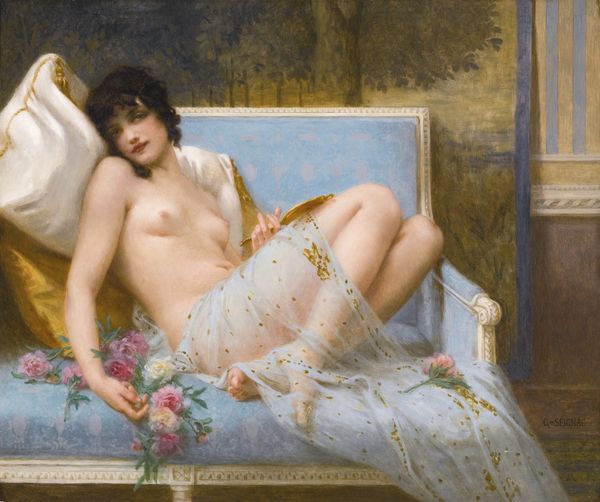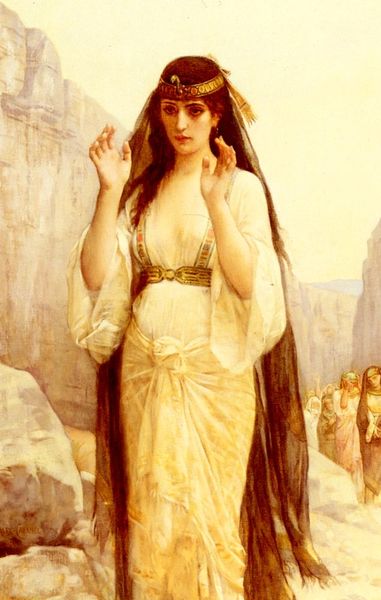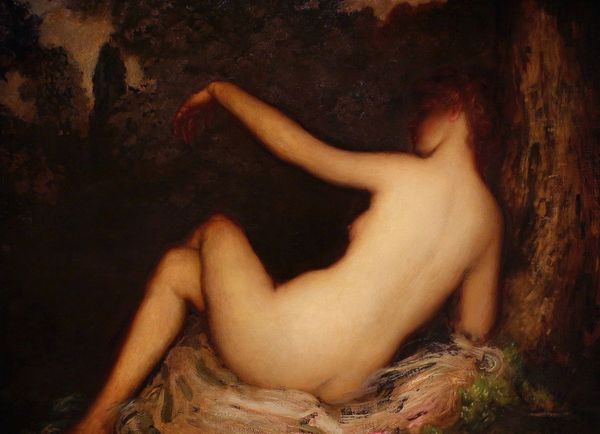
Copyright: Public domain
Editor: Herbert James Draper's "The Gates of Dawn," created in 1900 using oil paint, presents a luminous scene. There's an interesting blend of strength and vulnerability in the central figure. How do you interpret this work? Curator: Considering its context, Draper's "The Gates of Dawn" reflects a fin-de-siècle obsession with mythological themes and the female form. However, it also offers a compelling space to examine societal expectations around female representation, then and now. Draper’s Dawn, bathed in light, pushes open these imposing, gilded gates; what barriers, historically, do you think women were expected to both maintain and then breach, so to speak? Editor: Well, she is depicted as sensual yet powerful… Maybe a departure from earlier, more demure portrayals? Curator: Precisely! We can view this "Dawn" as disrupting Victorian ideals of female passivity, literally pushing against architectural confines. The abundance of light becomes a symbol of liberation and agency. Consider how later feminist artists employed similar visual strategies to challenge the male gaze and redefine female subjectivity. Editor: That’s a very compelling reading. I hadn’t considered it as a potential feminist statement. Curator: Think of it as a complex negotiation. While celebrating beauty, does it simultaneously reinforce objectification? Exploring these tensions keeps the artwork relevant and allows it to engage with contemporary conversations about gender and power. What will you carry forward into future viewings? Editor: This definitely changes my perspective; seeing the image through a feminist lens adds a depth I hadn't anticipated. Thanks! Curator: Indeed! Always remember art acts as an archive of social narratives. It's on us to question and uncover them.
Comments
No comments
Be the first to comment and join the conversation on the ultimate creative platform.
